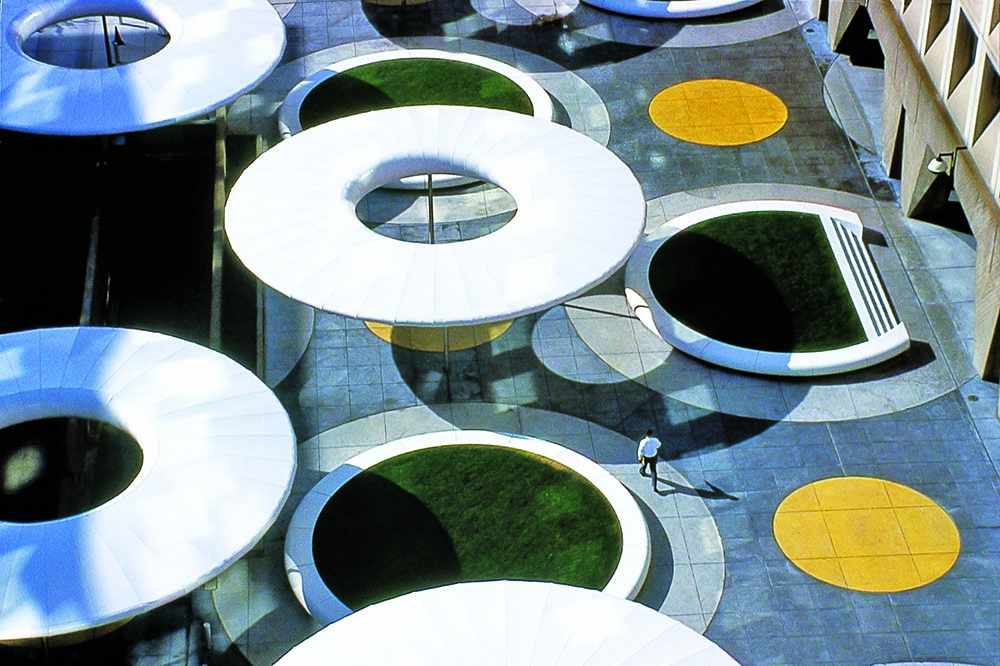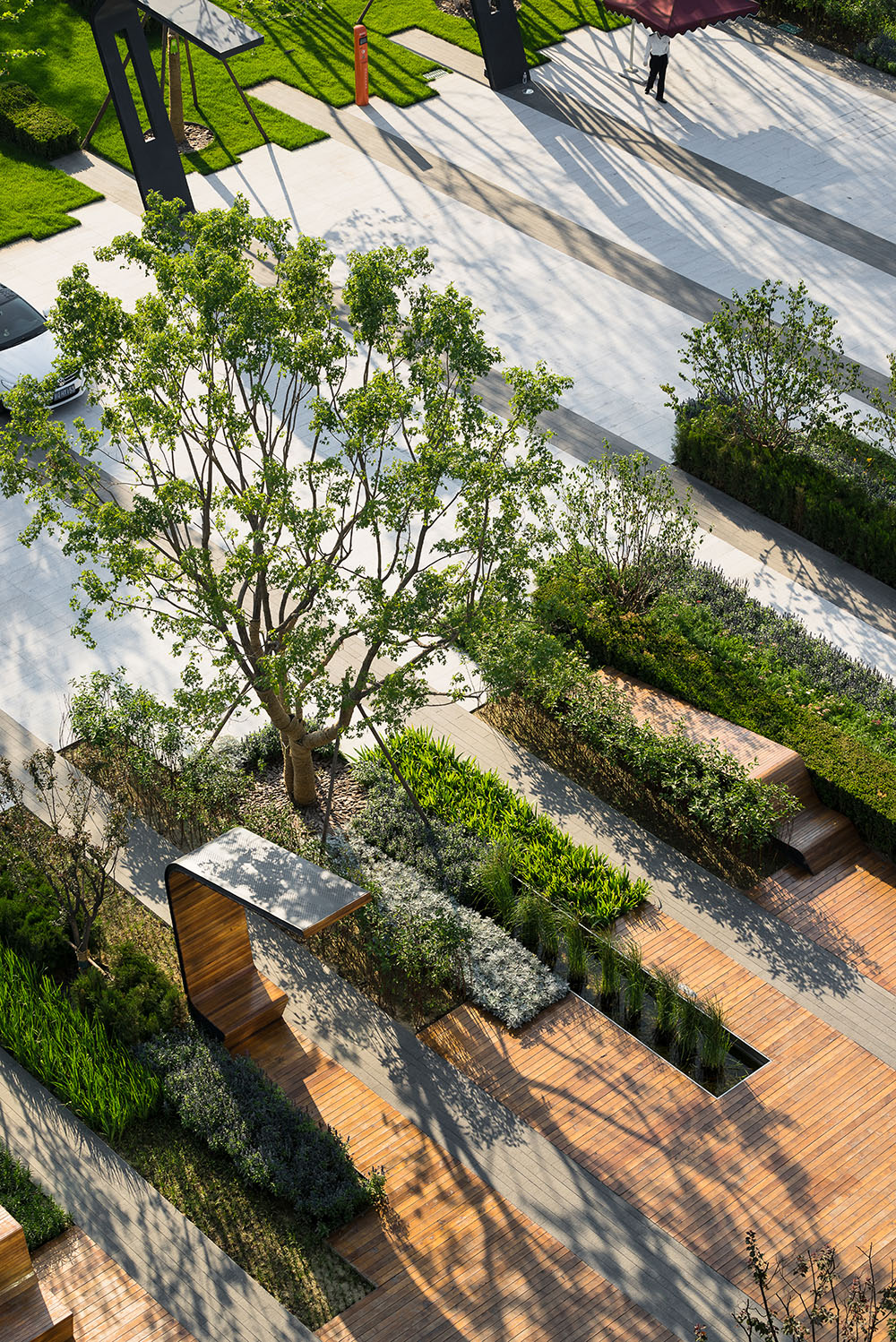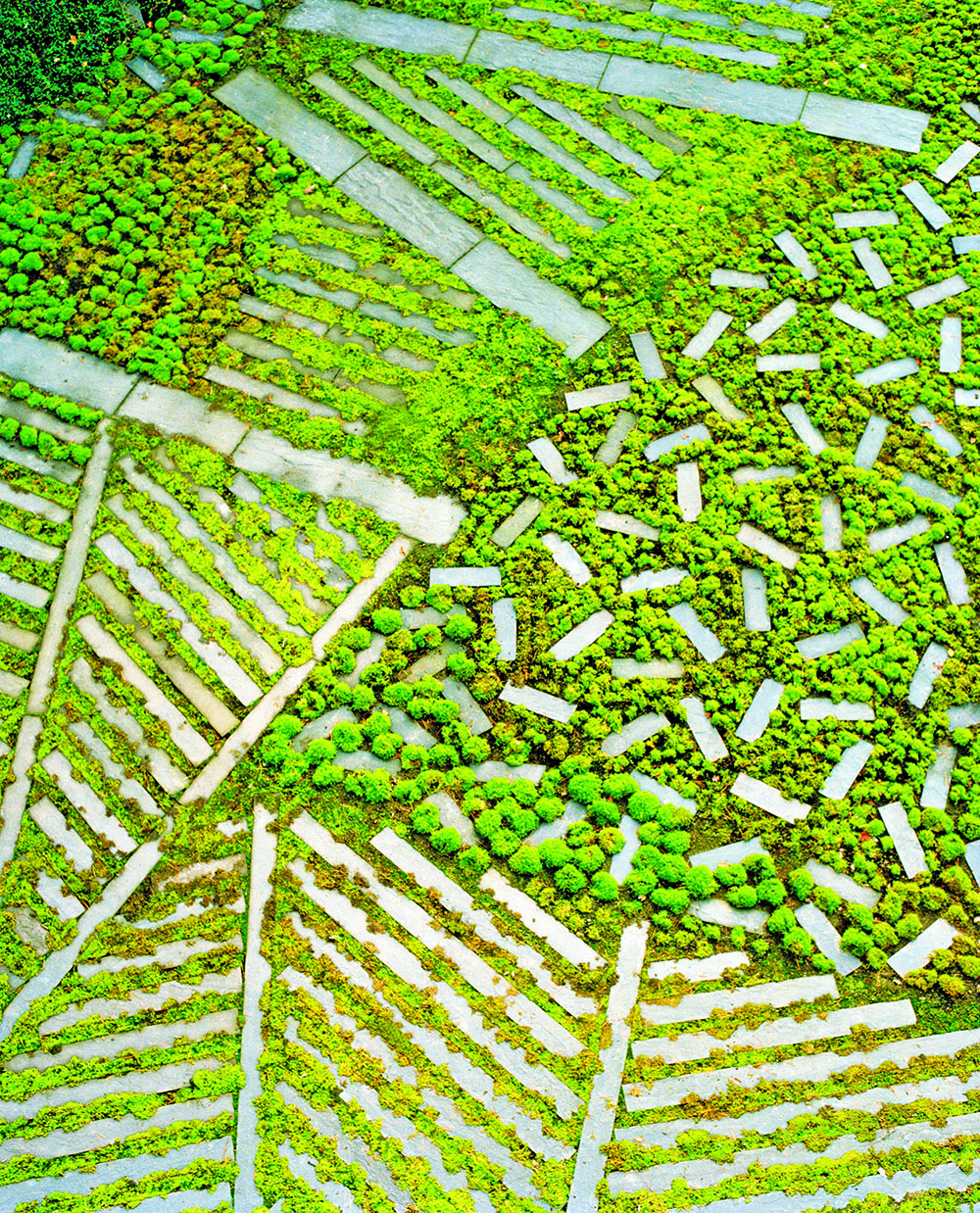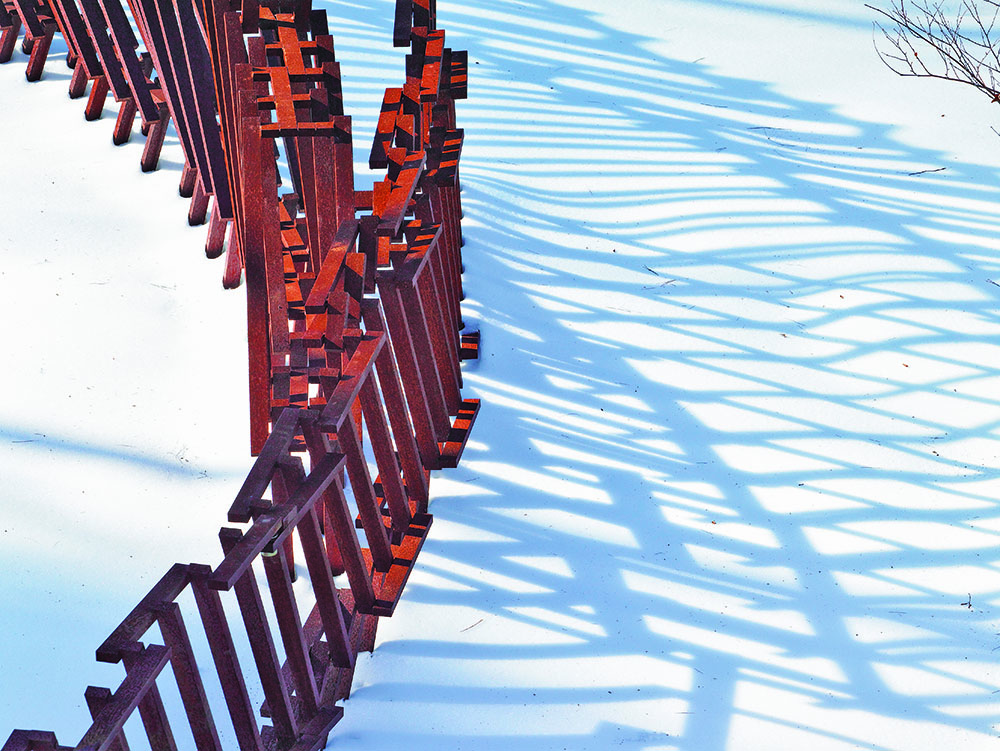Design: Pattern inspired landscapes
Landscapes can have a variety of patterns, both natural and man-made. Sometimes geometric patterns intersect with organic ones to create a desired effect, and sometimes the opposite. Patterns can also rely on seasonal changes or regular maintenance. These patterns can be found on a variety of scales and can showcase a specific designer’s style and aesthetic.
Landscape architects often incorporate these patterns into designs in a variety of ways, as can be seen in the following projects.
Martha Schwartz uses patterns in her projects through programming, planting, and lighting. Some of the examples are HUD Plaza, and the Broward County Civic Arena.

In the HUD Plaza design, Schwartz uses circular forms in repetition for various programming such as planters that double as seating and canopies that provide shade. Throughout the day, the shifting of light and shade creates dynamic patterns.
The arena project also makes use of forms and shadows. The large sculptural canopies play with pattern with colour and placement. These canopies are lit from within, creating patterns with light at nighttime, at the same time providing guidance for pedestrians walking into the arena. A striped paving pattern echoing the building’s geometry reinforces the arrangement of the canopies in the plaza.


Another landscape architect who uses patterns in her designs is Mikyoung Kim, and she uses a variety of materials and methods to create these. Two of her projects come to mind, both in Massachusetts.
The Levinson Plaza in Boston is a space for worship, and a combination of hardscape and landscape. Kim uses pavement materials and green spaces to create this pattern. Pavement materials are specifically chosen to endure long and challenging winters. The design is inspired by the herringbone patterns of residential landscapes. The paved areas are carved to allow access to the garden space between major entry points. The design deals with residents’ concerns of both visuals and sound, due to the nearby thoroughfare used for train and other vehicular traffic. Layered hedge rows of river birch and zelkova add to the patterning and filter urban conditions, while providing safety throughout the space.


Kim’s design for the FlexFENCE at Farrar Pond Residence in Lincoln, Massachusetts tries to create harmony between contemporary materials, native plants, and kettle kame topography. The pattern flows from landscape to materials, weaving seamlessly within the existing forest. Conceived as a flexible structure, the dynamic, weathering steel fence was formed on site and opens and closes with transformations of the ground plane throughout the changing seasons.
Text by Iqra Naqvi, Master of Landscape Architecture candidate at the University of Toronto, a maker, and an artist.


